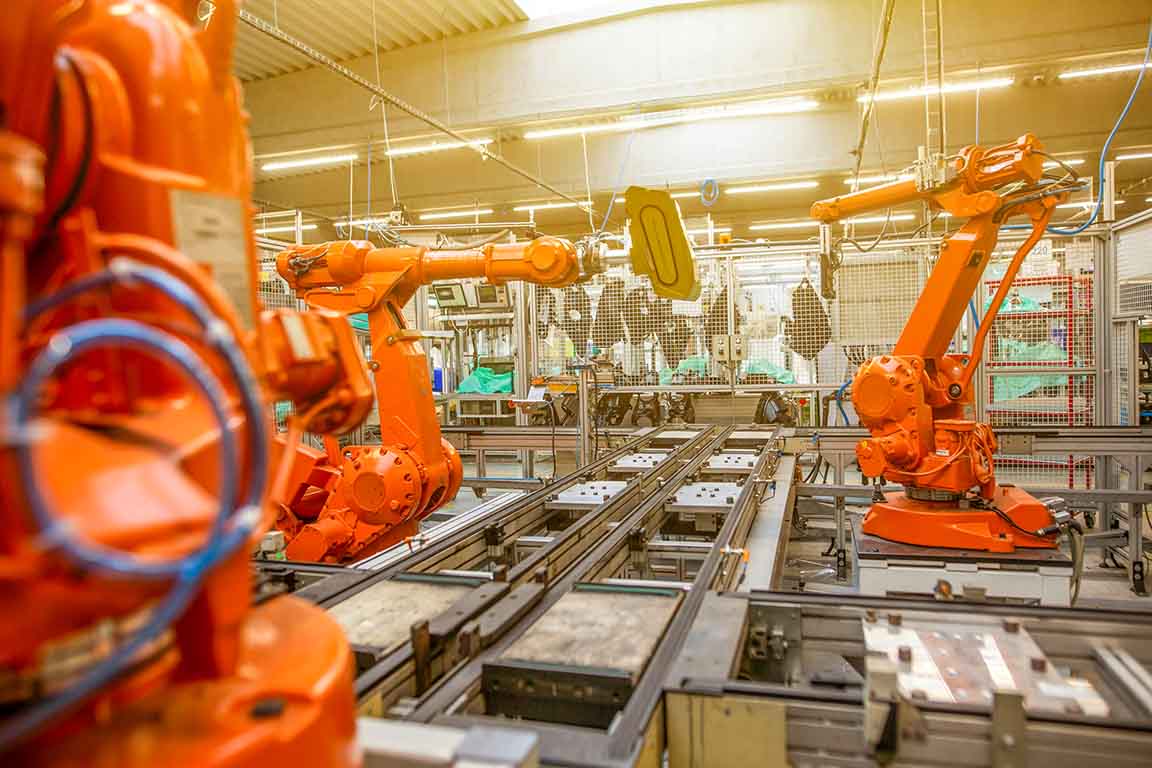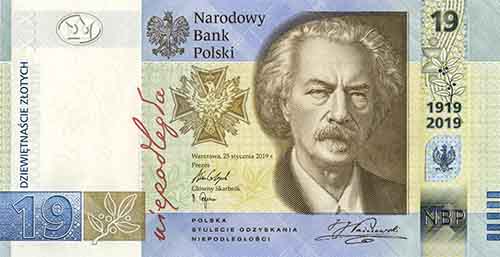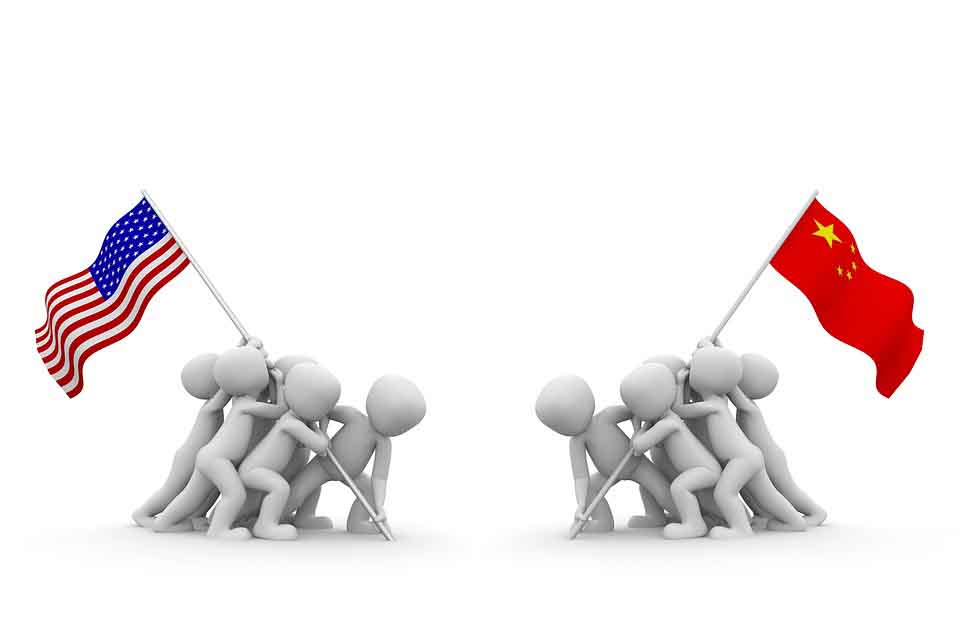China and 14 other countries, but without the United States, have agreed to create the largest trading bloc in the world, covering almost a third of all global economic activity and population.
Countries of the Regional Comprehensive Economic Partnership
(Source: Wikipedia, with author's modifications)
Not so long ago, on November 15, an event of global importance took place, which, however, remained almost unnoticed by most commentators and mass media recipients in the United States and - I dare to say - also in Poland, now occupied with either the coronavirus or an election crib in USA, or simply preparations for the American Thanksgiving holiday.
The event I am talking about is a tectonic shift of the center of gravity of the world economy and trade in favor of the Far East, and more specifically Southeast Asia, and more precisely - China. I am referring, of course, to the signing - by teleconference, after eight years of difficult and very undemocratic secret negotiations - of a multilateral trade and economic agreement by 15 countries in Asia and the Pacific, together representing almost a third of the world's gross domestic product (GDP). It is a Free Trade Agreement (FTA) that has created the world's largest trading bloc and is a significant achievement for China, which is fighting with the US for influence and economic domination both in the region and in the world. This agreement is called Regional Comprehensive Economic Partnership (RCEP).
The signatories of this agreement include the following countries: Brunei, Lao (Laos), Vietnam, China, Cambodia, Myanmar (Burma), Japan, South Korea, Thailand, Malaysia, Singapore, Indonesia, Philippines, Australia and New Zealand, and thus all members of the ASEAN (Association of Southeast Asian Nations) bloc, plus some significant countries in the region. Apart from - of course - the absence of the USA, the fact that India withdrew from negotiations in the fall of 2019 and is not on this list is itself notable. Undoubtedly, this pact is a symbol of Beijing's growing economic influence and a challenge for the United States - an attempt to counterbalance American impact in the world economy, and to consolidate China as the dominant power. It is definitely a success for China, by far the largest market and economic authority in the region.
Due to the coronavirus, signing the RCEP deal was rather unusual. The ceremonies were held separately in each of the 15 signatory countries, but they were all linked by video, broadcast simultaneously on a split screen. Each country's trade ministers took turns to sign a separate copy of the pact, while the head of state or government chief stood nearby and watched.
The newly signed pact covers more humanity than any previous regional free trade agreement: 2.2 billion people. By comparison, the European Union has a population of 446 million, and the combined populations of the United States, Canada, and Mexico are approximately 478 million. So it's hard to overestimate its importance. One can only be surprised that so little is said about it now, for example in the USA, for which this event is of fundamental importance.
Let us repeat it again to underscore the importance of this agreement: The RCEP pact covers a market of 2.2 billion people, or almost 30% of the world's population, with a combined GDP of $ 26.2 billion, or about 30% of global GDP.
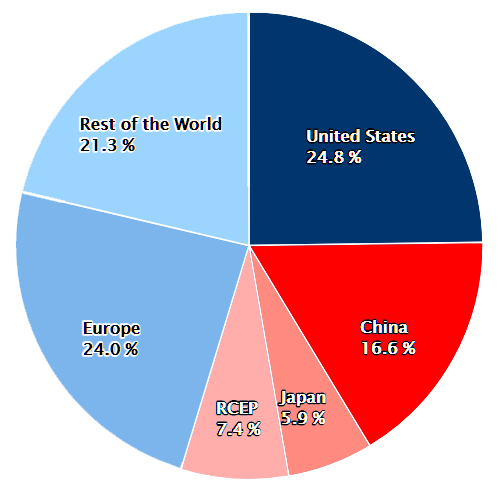
World economy measured by GDP in 2019 (data according to the World Bank)
You may recall that the United States was once involved in the free trade negotiations in the Pacific, known as the Trans-Pacific Partnership (TPP), with a range not much smaller than the RCEP, in which Washington was trying to play a leading role, but which raised opposition on both sides of the American political scene, and from which President Trump withdrew, considering them unfavorable to the interests of the USA and his doctrine of America First.
There is also something ominous for many opponents of free trade agreements that powerful politicians and lobbyists get along covertly, without public dialogue, and make decisions on behalf of millions of people. Apparently, the negotiations were kept secret in order to prevent widespread protests, such as those that broke out during the TPP negotiations - also carried out in secret, but which did not avoid leaks.
The rest of the ASEAN bloc continued these negotiations on their own, and China eagerly jumped into the void left by the Americans. It's no secret that China's presence in the RCEP fits in perfectly with Beijing's projects such as the enormous Belt and Road Initiative . China does not hide that it wants to be seen as the leader of the Asian economic bloc and the champion of multilateralism in the absence of the United States.
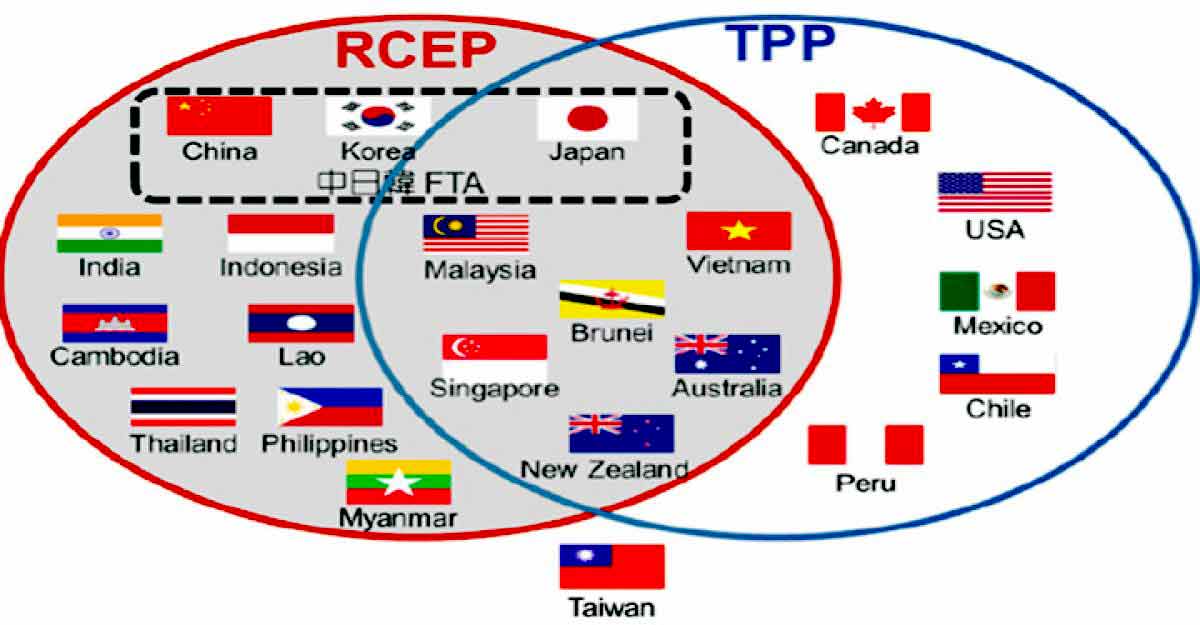
RCEP, ASEAN and TPP countries (Source: Asian Trade Union Council)
Time will tell whether the RCEP will create significant difficulties for US producers who may lose their export markets, or on the contrary, whether it will protect US interests from increasing globalization. Critics of free trade agreements say that they generally induce companies to move industrial jobs abroad, and thus primarily to China. Conversely, lower trade barriers stipulated in the RCEP agreement can only encourage global companies to invest even more in the region, including creating supply chains and distribution centers, and to continue manufacturing in Asia, rather than repatriating it back to North America.
The scope of the new agreement is currently limited. For the time being, the agreement does not go as far as, for example, the European Union in the integration of member states, as it does not compel the signatories to open up services and other sensitive areas of their economies. Contrary to the alleged TPP, it does not delve into the - often controversial - issue of intellectual property protection or personal data protection. It also does not cover issues such as environmental protection or the reduction of government subsidies to state-owned enterprises, which undoubtedly gives the Chinese an advantage, but it sets out rules for trade that will facilitate investment and doing business within the region itself.
However, it may take some time for any country to see the promised benefits of integration, as six ASEAN countries and three other countries still have to ratify it before it enters into force. This can turn out to be a very slow process.
As we said, it is conspicuous that the pact does not include India, the second regional giant. The government in New Delhi withdrew from negotiations in November 2019. The Chinese state publication Global Times wrote that "the Modi administration made a serious strategic mistake." Is it really India's loss and China's gain as some experts put it? It's hard to say at the moment.
China, whose relations with India have taken a turn to the worse recently, rejected India's demands for a more ambitious pact that would do much more to tie the region's economies, including trade in services, and protect India from the flood of Chinese goods. Indian politicians were reluctant to lower their country's high tariffs and open the way for a further flood of Chinese products. China sends goods to India worth $60 billion a year more than it imports, and India has a trade deficit with all the RCEP countries combined totaling $105 billion. Indians themselves admit that this is because their industry cannot produce in a way that competes with China's. Experts also warned that the RCEP would affect India's large dairy industry, because Australian and New Zealand producers could easily flood Indian markets and defeat disorganized and ineffective Indian small producers. So India remains beyond the reach of the RCEP for the time being, but everyone points out that the road to their integration into the new bloc is still theoretically open.
By the way, India also failed to reach a trade agreement with the European Union, their main trading partner, when the negotiations were conducted in 2007-2013.
Note that Americans have reservations similar to the Indians, as they both reflect on the meaning of international free trade agreements, whether in the Pacific region or elsewhere. It is not at all clear whether this so-called American protectionism works, in the long run, for the benefit or the detriment of the United States. The flood of Chinese goods is already a fact on the North American continent, and the deficit in trade with China is not only a problem for India, but also for the USA.
By the way, it is also worth noting that, by straying away from the RCEP agreement, India has thus indirectly demonstrated its support for US policy and we should expect closer political and economic ties bewteen Washington and New Delhi in the coming months and years. However, it is hard to resist the impression that the RCEP - as yet another attempt to bypass the United States - will ultimately enrich China, first and foremost.
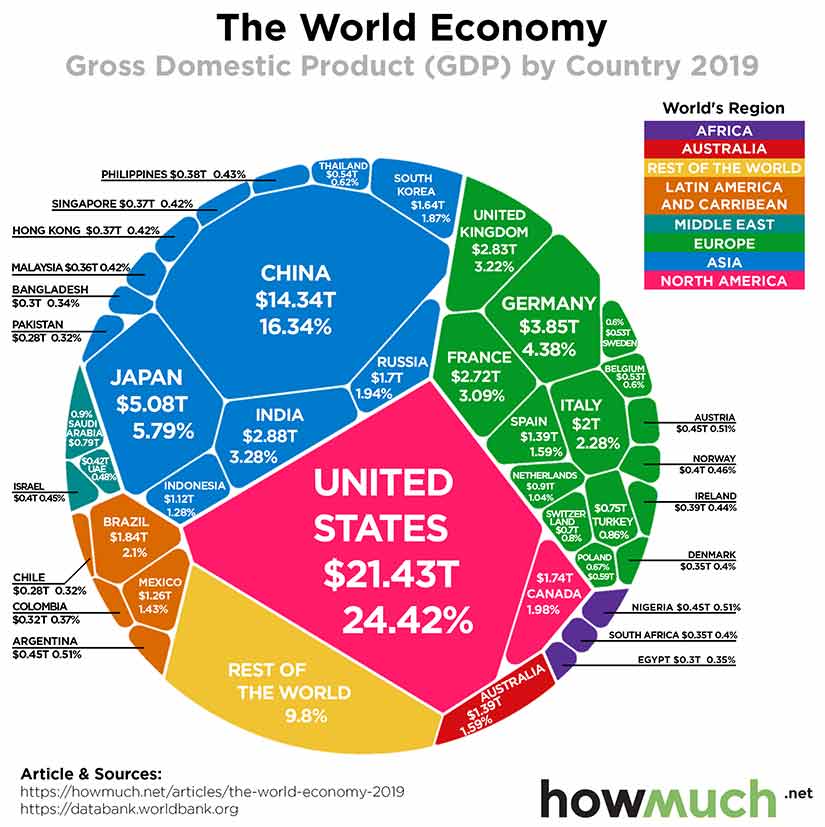
The world economy in numbers - GDP 2019 (Source: HowMuch.net, used with permission of the publisher)
However, it is not yet clear how the United States will react to this new trade pact. First, they have to deal with their internal problems: ultimately elect a president for the next four years, and contain the spread of the coronavirus. However, it is fair to say that economic and trade issues, and the related China problem, will be the dominant topic for the new administration, no matter who is ultimately selected.
According to Jennifer Hillman, a research fellow in trade and international political economy at the New York-based Council on Foreign Relations think-tank:
While the United States is currently focused on domestic concerns, including the need to fight the pandemic and rebuild its economy and infrastructure, I’m not sure the rest of the world is going to wait until America gets its house in order. I think there are going to have to be some responsive actions to what China is doing.
Given concerns about China's growing influence, the next US president who will be sworn in this January will necessarily have to seek much greater involvement in Southeast Asia to effectively protect US interests. He will have to efficiently balance the American interests with the globalist trends led by China. We'll see how he handles it, but regardless, the effects of the RCEP deal will be felt worldwide.





